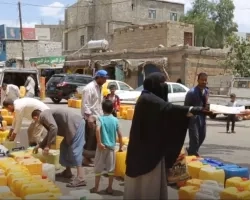The Keystone State is juggling how to update the construction of its schools to be more environmentally-friendly. Near the famous chocolate factories of Hershey, the Palmyra Area School District of Lebanon County saw its collective enrollment grow 11% over the past 5 years across the county’s 6 schools. With that growth has come the need for school buildings to expand and update – and to be fiscally and environmentally responsible as they do so.
Pennsylvania’s Guaranteed Energy Savings Act helps them do both, with a contracting process that helps public buildings upgrade for energy efficiency using a budget-neutral, progressive contracting process. In addition to making it easier to connect with approved “green” contractors, it provides for energy consultants to oversee the projects.
Darcy Brenner-Smith, the Palmyra district’s director of business affairs, said the program is “part of the District’s commitment to being good stewards of limited resources; both financial and those of our planet.”
“We are preparing our students for technologies of the future that increase the quality of our lives – technologies that NASA and its partners are using today and developing for tomorrow.”
–Jeff Remington, Palmyra Area Middle School
The Palmyra schools turned to Project Development Manager John Hayden of Harrisburg-based Reynolds Energy Services for the “green” guidance they needed. Hayden used a clean-energy management software platform developed by NASA Earth Applied Sciences POWER program. POWER stands for Prediction of Worldwide Energy Resources and the program integrates near real-time environmental data from satellites, specifically tailored to assist in the design of solar- and wind-powered renewable energy systems. The data help users quickly identify, assess and optimize the technical and financial viability of potential clean energy projects. The main way users work with POWER is through an interface called RETScreen.
“We use RETScreen to assist with energy benchmarking for a building,” Hayden said. Two years’ worth of energy bills are entered into RETScreen. “With the quick link to NASA’s weather data, we are able to normalize the utility data against weather to confirm that energy use correlates with weather. Once this correlation is defined, we can begin to predict the possible value of energy savings.”
Based on this data, all Palmyra district schools had their heating and cooling control systems replaced with improved systems. Palmyra Area Middle School, built in 1936, got a new roof and infrastructure modernization that included more classrooms and a larger cafeteria. Palmyra’s Forge Road Elementary School received critical upgrades, including a more energy-efficient building envelope, or the building’s exterior that repels the elements, and upgraded infrastructure. By using this hybrid approach, “We were able to control costs not only through energy savings, but through a … process that emphasized continued use of building elements that still have a significant remaining useful life,” said Brenner-Smith.
Using NASA data to upgrade and expand the schools “certainly fits in with the educational philosophy in Palmyra School District to promote STEM [Science, Technology, Engineering and Math] in all aspects of learning,” Brenner-Smith said. “I look forward to sharing the District’s successful use of this technology with students and faculty as a real-world example in their school.”
For Palmyra Area Middle School science teacher, Jeff Remington, this was a perfect teachable moment – a chance to expand minds as well as buildings. “I think the use of satellite technology and remote sensing is a wonderful STEM tool to help us observe phenomena that we can’t readily observe in traditional ways,” said Remington, who is a national STEM Teacher Ambassador. “As our school ventures more into robotics, drone technology, and the fundamentals of engineering-design process, we are preparing our students for technologies of the future that increase the quality of our lives – technologies that NASA and its partners are using today and developing for tomorrow.”
This story is part of our Space for U.S. collection. To learn how NASA data are being used in your state, please visit nasa.gov/spaceforus.




